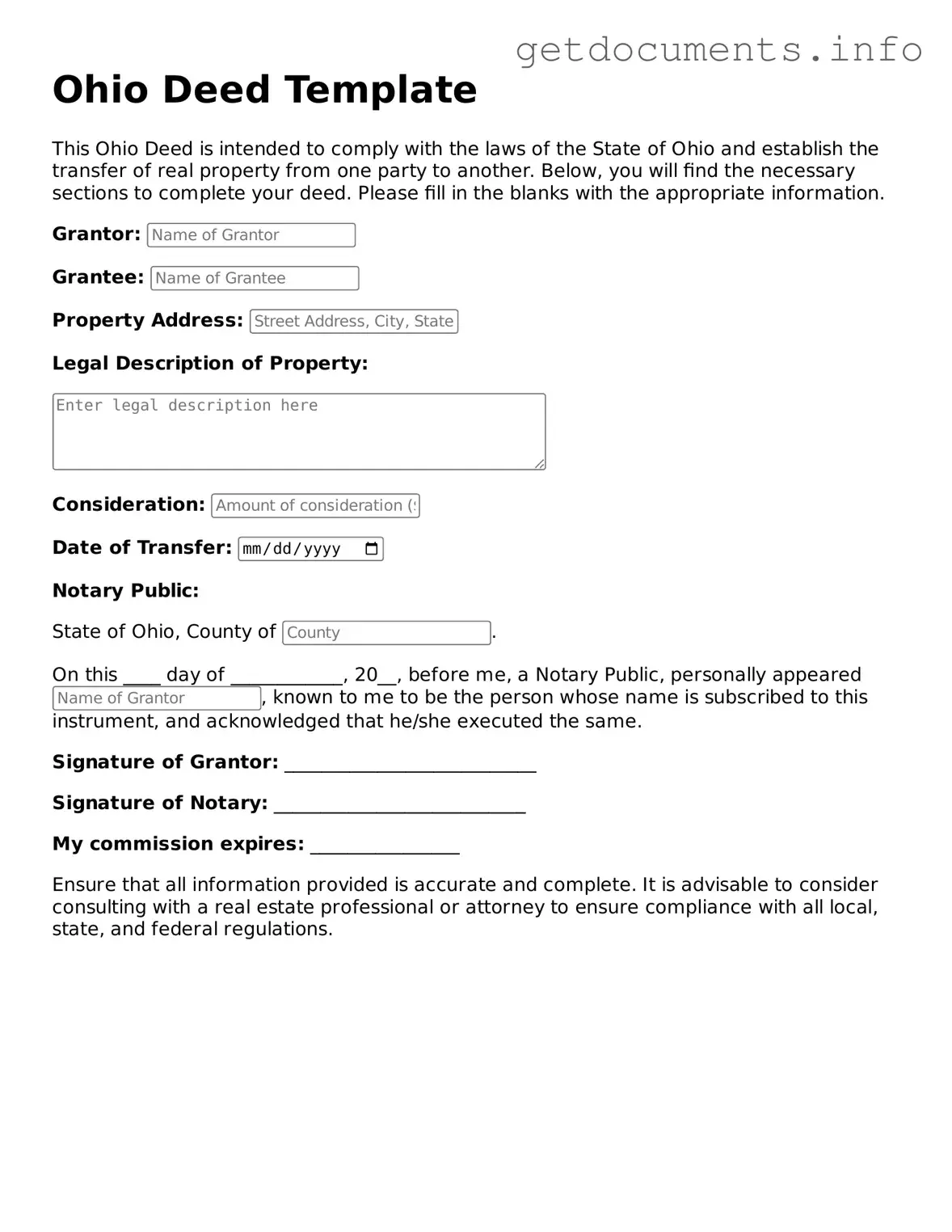When it comes to transferring property ownership in Ohio, understanding the Ohio Deed form is essential. This important document serves as the legal instrument that facilitates the transfer of real estate from one party to another. In Ohio, there are several types of deeds, including warranty deeds, quitclaim deeds, and special warranty deeds, each serving different purposes and offering varying levels of protection to the buyer. The Ohio Deed form typically includes vital information such as the names of the grantor (the seller) and grantee (the buyer), a legal description of the property, and any relevant terms of the sale. Additionally, it may require notarization and the payment of transfer taxes, making it crucial for parties involved to understand the requirements for a valid transfer. As you delve deeper into the specifics of the Ohio Deed form, you’ll discover how it not only protects the interests of both parties but also ensures that the transaction is conducted in compliance with state laws.
